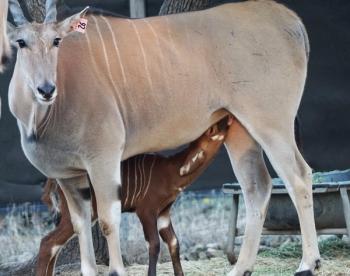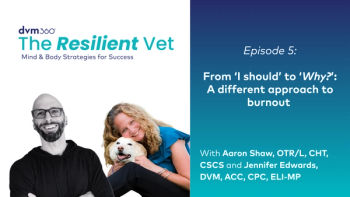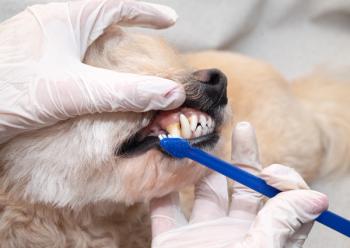
Study finds if bird flu is caught early enough, felines can survive it
Researchers at the University of Maryland found that antiviral treatment and catching the illness early can improve survival rates of cats positive for H5N1.
When feline patients test positive for the highly pathogenic avian influenza virus (H5N1), it is not uncommon for the clients to make the difficult choice to euthanize their cat. Recently, an outbreak linked to raw cat food resulted in the euthanasia of a cat after it ingested the food and later tested positive.2 However, researchers at the University of Maryland (UMD) led a study, recently published in One Health, that demonstrated promising results when a cat infected with avian influenza receives care and is treated early.
“Most importantly, our study shows cats can survive bird flu if they receive early care and antiviral treatment with oseltamivir. Cats need not be euthanized in every case. They can regain full health and what appears to be strong protection from reinfection for at least several months after recovery,” said Kristen K. Coleman, PhD, the study’s lead researcher and an assistant professor at UMD’s School of Public Health.
Because H5N1 spreads quickly through animals, the researchers are concerned that infected cats will pose an unexpected threat to humans they come into contact with, such as family members and veterinary teams. Study results highlight both the importance of quick recognition of disease and the potential of antiviral therapy to protect animal health and possibly reduce spillover cases.
“We found that cats infected with avian influenza were able to survive when treated promptly with oseltamivir. The key is early intervention. Being able to recognize and begin treatment at the first signs of illness gave us the best chance for success,” said Jake Gomez, DVM, who treated infected cats at Cross Street Small Animal Veterinary Hospital in Tulare, California.
Diving deeper into the research
On October 31, 2024, a family in Tulare, the epicenter of the H5N1 outbreak in dairy cattle for the state, brought their aged 1 year and 7 months male neutered domestic longhair pet cat (known in the research as Cat 2) to a local veterinary clinic for lethargy and refusing to ambulate. Cat 2’s owner stated that they had no knowledge of exposure to toxins for the cat, that he had indoor/outdoor access, and that he was up to date on his core feline vaccinations in California.
Cat 2 was given supportive treatment with subcutaneous fluids (200 mL lactated Ringer's solution) and cefovecin sodium, which is given as a single-injection, long-acting cephalosporin that lasts 14 days and is often used for adherence reasons and treats feline patients that are not eating. After 24 hours, Cat 2 returned to the clinic with minimal signs of improvement. Cat 2 was given an appetite stimulant but died 2 days later.
During their initial visit, Cat 2’s family reported that before Cat 2 displayed symptoms, another one of their cats, known as Cat 1 in the research, was acutely ill but was brought to another clinic. Cat 1, a male, neutered domestic shorthair aged 1 year and 5 months, was indoor only and up to date on all vaccinations.
Cat 1 suddenly became lethargic and was rushed to the local emergency facility for blood work and imaging of the thorax. At the time, the team suspected Cat 1 had an upper respiratory infection and was given Convenia and oxygen therapy. However, Cat 1 died suddenly when he returned home.
The attending veterinarian who cared for Cat 2 is a mixed-animal veterinarian who cares for under 100,000 cattle in California. When Cat 2 came to the clinic, multiple local herds and poultry operations were experiencing outbreaks of H5N1. Due to the acute mortality of Cat 1, this veterinarian was concerned that these feline patients could have H5N1, especially because they live less than a mile from the nearest cluster and one of the owners is a traveling hay salesman. The veterinary teams discussed precautions and isolation techniques with the owners and encouraged them to bring any remaining cats to the clinic immediately if they began to show signs. The attending veterinarian contacted the US Department of Agriculture and the FDA for testing and possible necropsy.
On November 6, 2024, the family brought in Cat 3, a male neutered domestic longhair aged 1 year and 7 months, who was also up to date on his vaccines and lived indoors only. He was lethargic and anorexic upon arrival, but a physical exam was "otherwise unremarkable."2 Cat 4, a 4-year-old male neutered domestic shorthair who was up to date on vaccines and lived only inside, was brought in the next day, presenting with lethargy and anorexia, and had an unkempt hair coat and nasal discharge.
Cat 3 was given meloxicam alongside subcutaneous fluid therapy, but because there was a suspicion of H5N1, he was also given 15 mg oseltamivir (Tamiflu) by mouth every 12 hours for 10 days. Three days later, he was given more subcutaneous fluids and put on meloxicam as an oral nonsteroidal anti-inflammatory drug. During his recheck on November 13, he was drinking normally, his activity had returned to normal, his appetite had improved, and he had gained weight. Cat 3 was found to have hypopyon in his right eye and no fever, so he was given a broad-spectrum topical antibiotic/steroid eye drop.2
Cat 4 also had signs of purulent nasal discharge bilaterally, serous discharge from both eyes, and increased bronchovesicular sounds bilaterally.2 He was given subcutaneous fluids, meloxicam, and oseltamivir. He was given meloxicam orally after 24 hours.
After their treatments, both cats came in for a follow-up. In February 2025, the owners reported that both pets had recovered and were back to normal. No information on human illness was provided, and blood samples were collected from the recovered cats at a follow-up visit about a month later.
Both Cats 3 and 4 were positive for influenza A virus antibodies via enzyme-linked immunosorbent assay and positive for neutralizing antibodies against influenza H5N1 2.3.4.4b. Blind results from the study were also in agreement.
“This outbreak of H5N1 among house cats demonstrates how quickly H5N1 can spread through multiple animals in a home, posing an unexpected spillover risk to family members and veterinarians caring for them. Most importantly, we demonstrate that with early supportive care and early treatment with oseltamivir, H5N1 is a survivable disease in domestic cats,” the researchers stated.2
“Our results support the continued prioritization of neuraminidase inhibitors in the treatment of H5N1 in mammals and highlight the importance of early identification and targeted treatment. Furthermore, we demonstrate that survivor cats can regain full health and maintain high titers of neutralizing antibodies against H5N1 at least 3-4 months post recovery. These findings suggest that cats and other mammalian species may sustain strong protection from reinfection of H5N1 after natural infection and continue to thrive,” they concluded.
References
- Bird flu outbreak in house cats: high-risk but survival possible. News release. University of Maryland. September 18, 2025. Accessed October 1, 2025.
https://www.eurekalert.org/news-releases/1098916 - Gomez JF, Bemis IG, Shittu I, Gray GC, Coleman KK. Outbreak of highly pathogenic avian influenza a(H5N1) among house cats: a case series involving oseltamivir treatment. One Health. 2025;21:101211. doi:10.1016/j.onehlt.2025.101211
Newsletter
From exam room tips to practice management insights, get trusted veterinary news delivered straight to your inbox—subscribe to dvm360.






